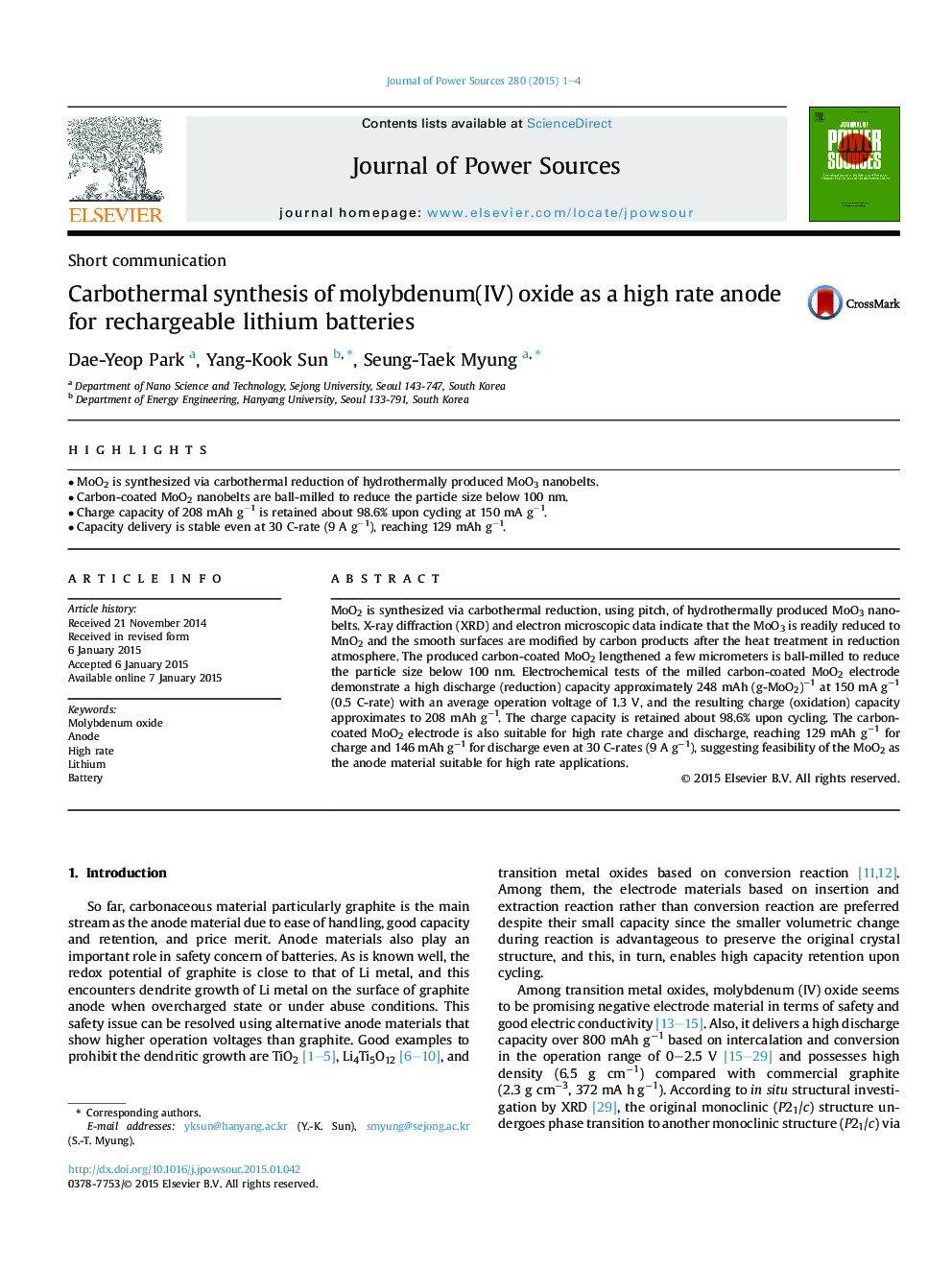| Article ID | Journal | Published Year | Pages | File Type |
|---|---|---|---|---|
| 7733386 | Journal of Power Sources | 2015 | 4 Pages |
Abstract
MoO2 is synthesized via carbothermal reduction, using pitch, of hydrothermally produced MoO3 nanobelts. X-ray diffraction (XRD) and electron microscopic data indicate that the MoO3 is readily reduced to MnO2 and the smooth surfaces are modified by carbon products after the heat treatment in reduction atmosphere. The produced carbon-coated MoO2 lengthened a few micrometers is ball-milled to reduce the particle size below 100 nm. Electrochemical tests of the milled carbon-coated MoO2 electrode demonstrate a high discharge (reduction) capacity approximately 248 mAh (g-MoO2)â1 at 150 mA gâ1 (0.5 C-rate) with an average operation voltage of 1.3 V, and the resulting charge (oxidation) capacity approximates to 208 mAh gâ1. The charge capacity is retained about 98.6% upon cycling. The carbon-coated MoO2 electrode is also suitable for high rate charge and discharge, reaching 129 mAh gâ1 for charge and 146 mAh gâ1 for discharge even at 30 C-rates (9 A gâ1), suggesting feasibility of the MoO2 as the anode material suitable for high rate applications.
Related Topics
Physical Sciences and Engineering
Chemistry
Electrochemistry
Authors
Dae-Yeop Park, Yang-Kook Sun, Seung-Taek Myung,
